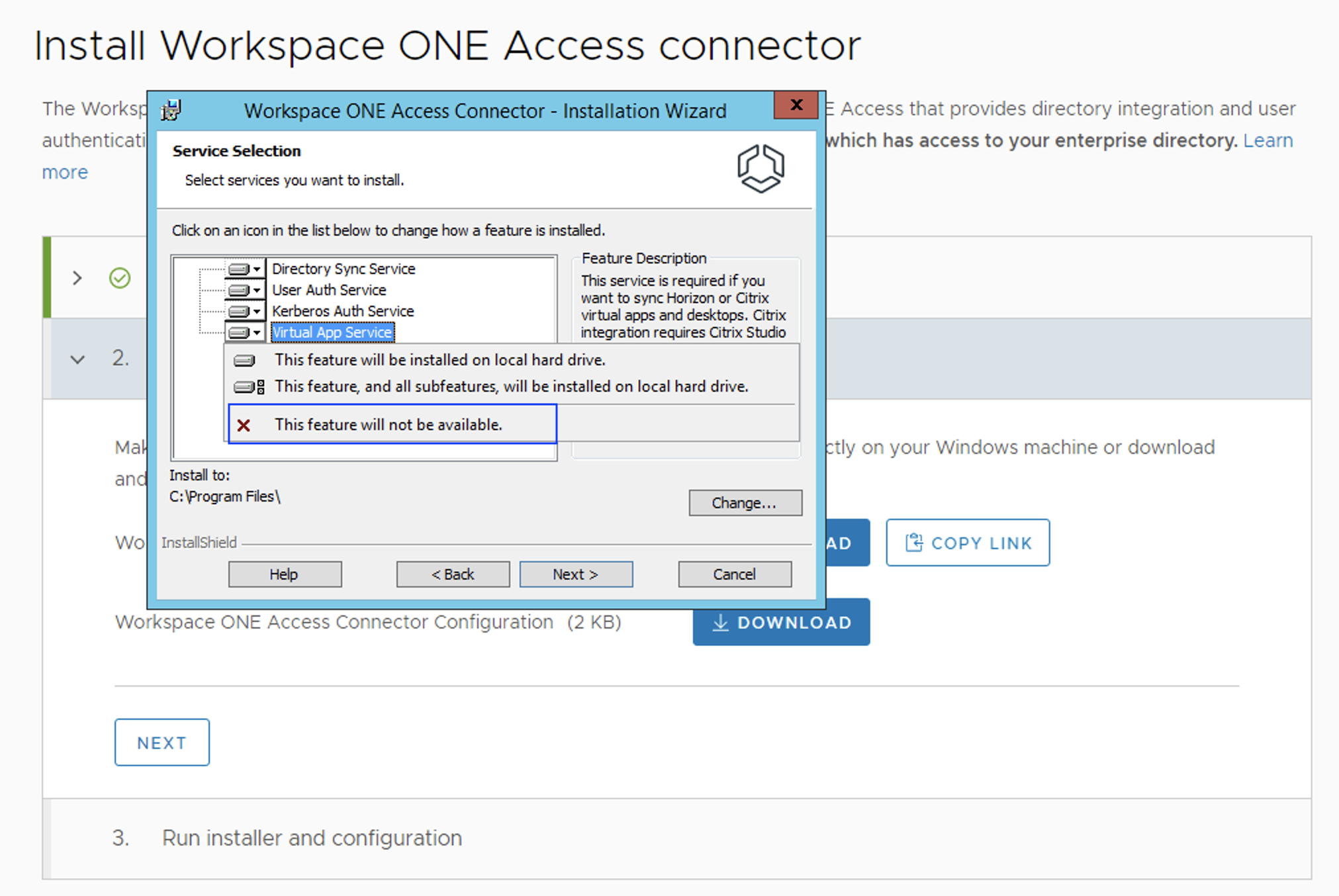In this step, you download and install an on-premises Workspace ONE Access connector. You create a password that is stored in the configuration file you download with the Workspace ONE Access connector installer.
In this task, you configure a password that is used to encrypt the contents of the configuration file you download with the Workspace ONE Access connector installer. When you run the installer, you will be prompted for the location of the downloaded configuration file and the password to decrypt the file contents and get the connection details of the Workspace ONE Access tenant. The connector uses these details to establish a secure communication with the Workspace ONE Access instance.
- Internally, the connector establishes an intranet connection with your enterprise Active Directory.
Note: If you are using security policies to control access to the machine hosting your enterprise Active Directory, make sure you include the machine on which you install Workspace ONE Access connector in the allowed list of your AD host.
- Externally, the connector establishes a secure outbound connection to a hosted instance of a VMware Workspace ONE Access tenant created for your enterprise as part of the self-service federation process.
- The hosted instance of the Workspace ONE Access tenant acts as an identity broker (service provider) to your third-party SAML 2.0 IdP. It is not involved in the actual user authentication.
- If the Workspace ONE Access based authentication method is used, then the Workspace ONE Access tenant authenticates users directly against your enterprise Active Directory through the on-premises connector.
Prerequisites
- To proceed with this step, you must have completed Step 1 of the self-service federation wizard.
- Verify that you have access to a machine with installed MS Windows Server 2008 or later.
- Verify that you can access your enterprise Active Directory from the host Windows machine.
- The host Windows machine must have a static IP address and a DNS resolvable FQDN.
- The connector must have network access to Active Directory on ports 389/636.
- Verify that your corporate firewall is configured to make an outbound connection from the Workspace ONE Access connector to port 443 for interaction with the hosted Workspace ONE Access tenant service.
- If you already have the Workspace ONE Access connector installation file, verify that you have the latest version.
Procedure
Results
The home page of the self-service federation workflow displays.
What to do next
The next step of the self-service federation setup is to sync groups and users between your enterprise Active Directory and the Workspace ONE Access tenant.
